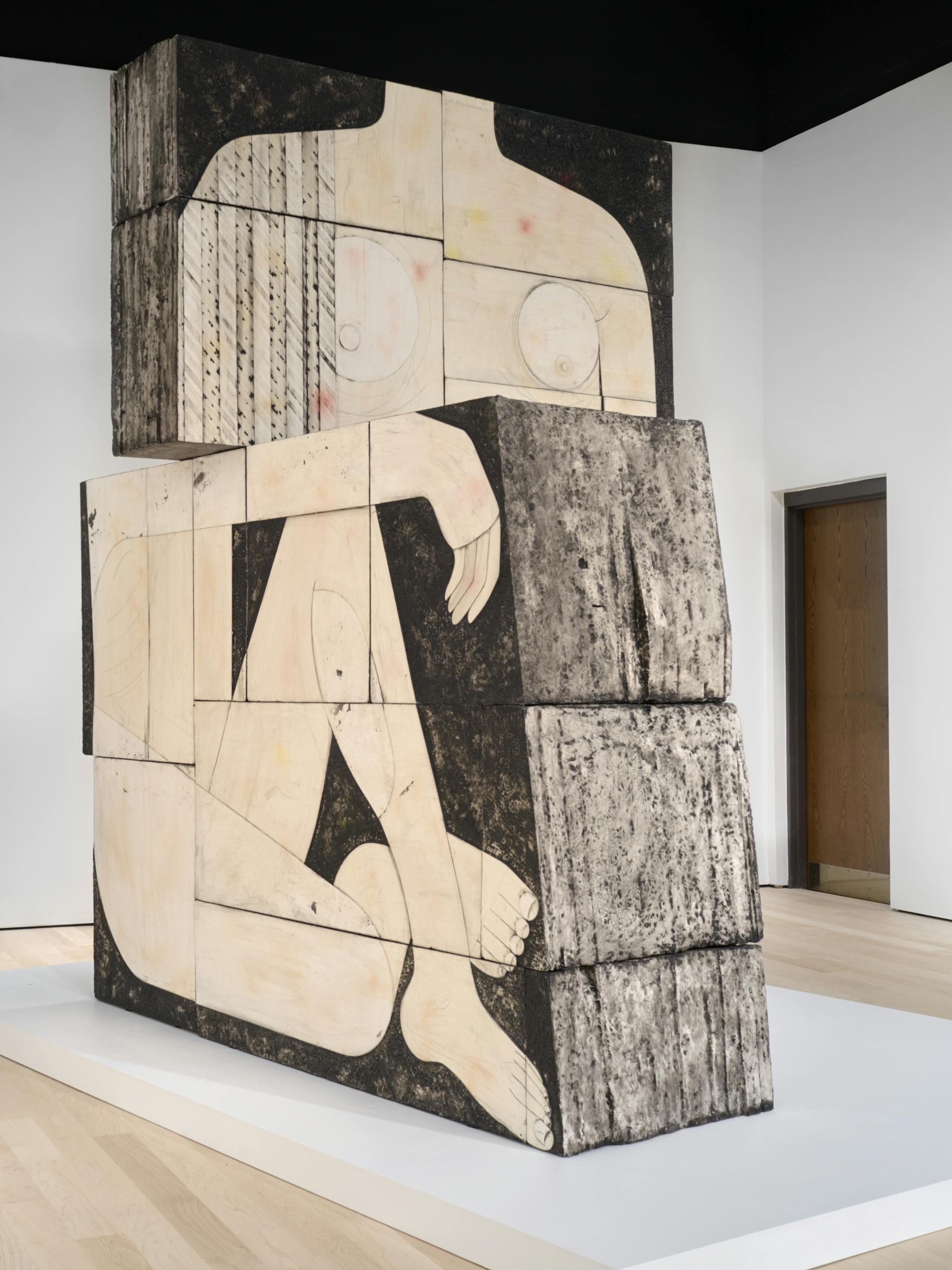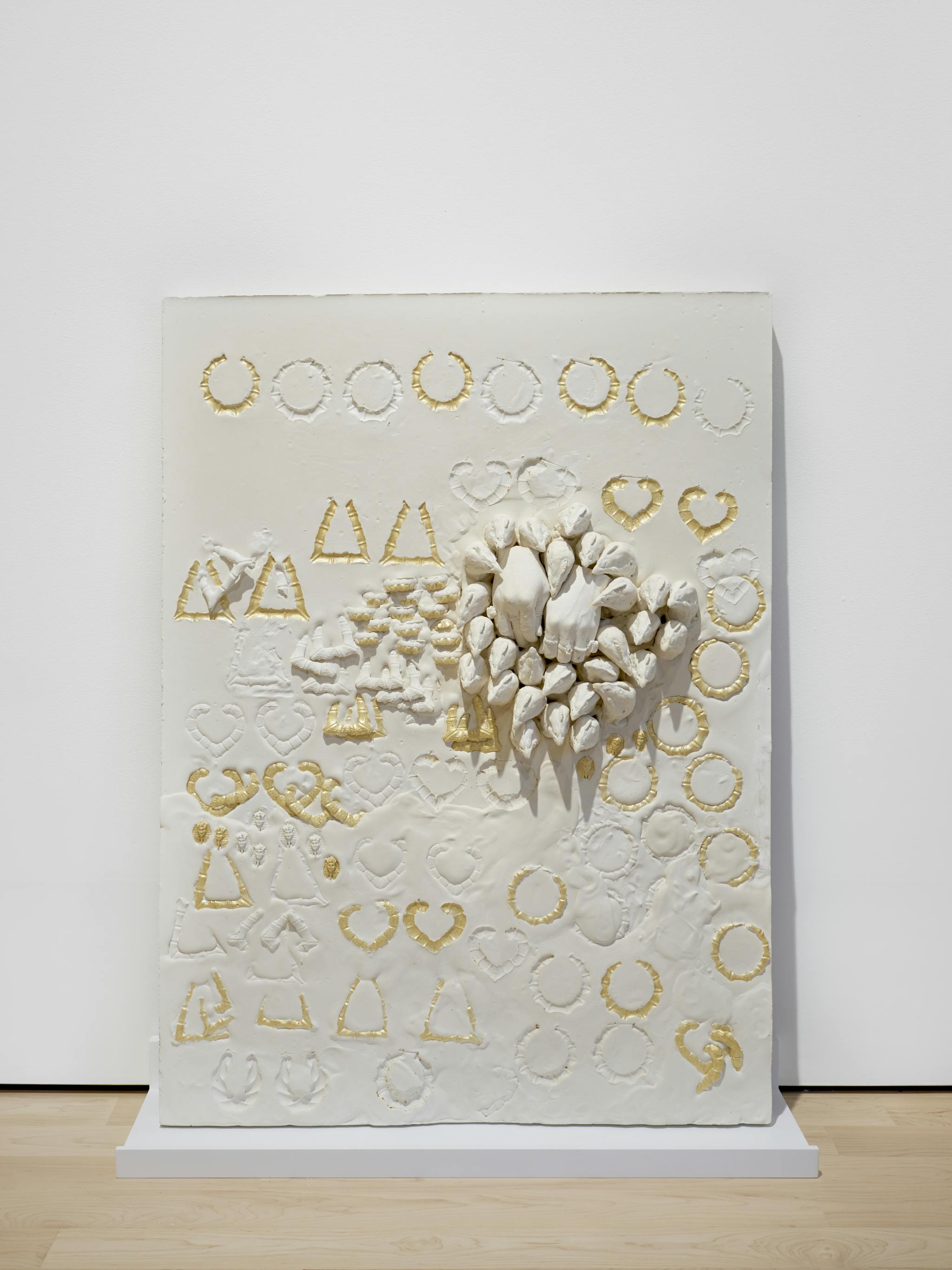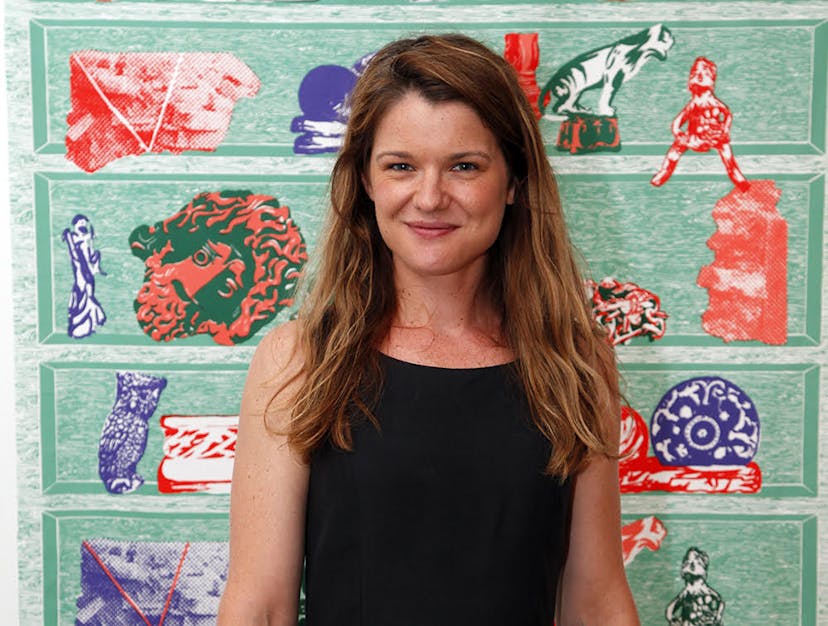The story of western civilization is largely narrated by its objects; the likenesses of its most prominent figures, icons of its faiths, depictions of its victories or commemorations of its loss. The voices and experiences largely left out of these narratives are well known, making the suggestive histories that artists Ruby Sky Stiler and LaKela Brown build through their work a compelling inclusion in Providence College Galleries’ (PC–G) current exhibition “Classic Beauty: 21st Century Artists on Ancient [Greek] Form.”
Based in New York City, Brown and Stiler are both female-identifying artists whose work often employs either depictions of female form or the identifiable accessories of female adornment. Two specific pieces in the exhibition, “Jewelry, Chicken Head and Hands Composition with Gold,” 2018 and “Seated Woman,”2015 by Brown and Stiler respectively, use the vernacular forms of the museum artifact and monument while leaving room for a productive instability around their origin or perceived history. These are not objects of stone, or a material that would link them to a specific earthen place or geographical site. Rather they are formed from materials that could as easily be associated with theatrical scenery as artistic construction – quick-dry plaster, foam, fiberglass, paper collage.
Installed in PC–G’s Reilly gallery, Stiler’s “Seated Woman” becomes as much architectural as figurative. Formed from a stack of roughly ten large blocks Stiler’s Woman reaches to over twelve feet tall. Due to the modularity of construction and the figure’s conspicuously missing head, Stiler prompts a further commitment to her theatrical construction – perhaps not all the blocks had been recovered from the sculpture’s fictional site of discovery and we are only being presented with what could be preserved.
This omission of the woman’s head also compositionally undermines the Egyptian adherence to representing the completeness of human figures. Typical in Egyptian art, torsos and arms would face the forward so that they could be presented in their entirely. Then – despite the anatomical impossibility – legs and feet would be depicted in profile so that they too could be most completely rendered. Stiler, in her image placement, adheres to the perspectival shifts in the figure but actively resists any completeness of the woman by failing to provide the final stack of blocks that would present her most defining characteristic, her head.
Any kind of specific female figuration is missing from LaKela Brown’s piece “Jewelry, Chicken Head and Hands Composition with Gold,” female life – specifically African-American female life – is immediately called forth through her careful object selection. Brown’s plaster reliefs emerge from the converse actions of pouring of plaster into molded forms or impressing objects directly onto its surface. Brown is left with less fluidity than Stiler in her decisions about scale, as she is ultimately beholden to the 1:1 relationship to physical objects she casts. While sculpture typically has the ability to constantly push a viewer into the present through a physical engagement with the piece in the here-and-now, Brown’s reliefs are at once sculptural but also able to address history and memory. Rather than the thing itself we see a former impression and along with that impression comes the understanding that these plaster tablets may well outlive the items they trace. In the ultimate act of immortalization “the people of Pompeii, trapped in an emulsion that marked their death, but which paradoxically carried forward their image into eternity.”(1) In her work, Brown makes a judgement about what objects from her own life she will carry into eternity and through those decisions is about to question how and why certain objects are historicized.
In “The Story of Art,” Gombrich identifies that one Egyptian word for sculptor is “he-who-keeps-alive”(2) and in contemplating the work of Brown and Stiler, perhaps a more appropriate sculptural descriptor could be “she-who-brings-forth”. While operating out of the same visual vocabulary of historical artifact or reconstructed monument, both artists are writing a history while molding a present. They are building from scratch, proposing a history with an inner life and a shift in who is pushing the narrative.
1. Sarah Robayo Sheridan, “The Etched Side of the Image” from Seven Films by Paul Sietsema, (Milan, Mousse Publishing), 15.
2. E.H Gombrich, “The Story of Art,” (London, Phaidon, 1950), 58.
“Classic Beauty: 21st-Century Artists on Ancient [Greek] Form” is on view at Providence College Galleries’ Hunt-Cavanagh & Reilly Galleries until November 17, 2018. Artists include Robert Andrade, Daniel Baird, Lakela Brown, Matthew Craven, Vivian Greven, Molly Kaderka, Lucy Kim, Kirstin Lamb, Shari Mendelson, David Ross Harper and Ruby Sky Stiler.



